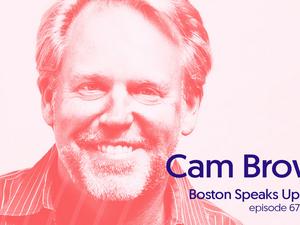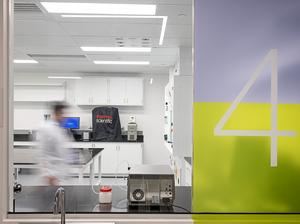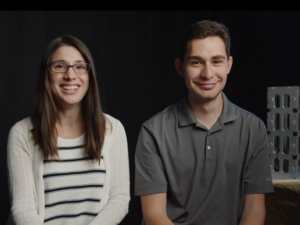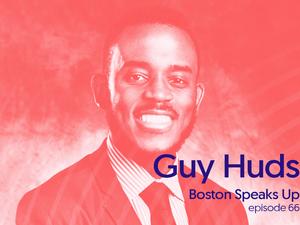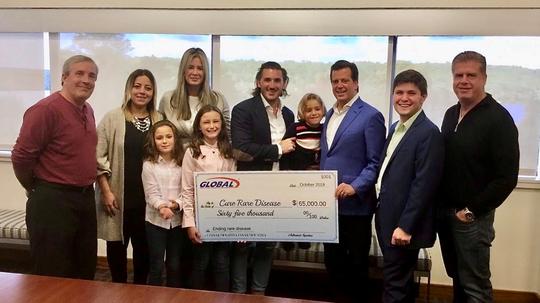
Rich Horgan wants to save his brother’s life.
Now 24, Terry was diagnosed with Duchenne muscular dystrophy (DMD) when he was three years old. It was hardly a first for their family. Horgan had already lost several uncles to the same fate.
“This disease has really haunted my family,” Horgan said. “My mom’s three brothers all had it, all passed away from it at a young age. My brother has it now. And there’s really been nothing to advance technology to save these boys’ lives over the decades. That’s very frustrating.”
DMD is a progressive form of muscular dystrophy. Over the course of a person’s life—usually a male’s—DMD will cause skeletal and heart muscles to slowly atrophy, limiting patients’ ability to sit, stand and even speak. By the time a patient reaches adolescence, he will likely be using a wheelchair and will begin having heart and respiratory muscle problems. At the moment, there is no known cure. Just two medications have been approved by the U.S. Food and Drug Administration (FDA) as orphan products to treat it, and those only received that designation within the last three years.
As a child, Horgan says, he felt helpless watching his younger brother grow up differently—more slowly—than his peers did, than Horgan himself did.
“You start to think, ‘My brother’s not growing as fast. My brother’s not doing things that other boys his age are doing,’” Horgan said. “That framed my childhood a lot: dealing with feelings of powerlessness and hopelessness. This disease was coming no matter what.”
A young Rich Horgan couldn’t do much to help Terry. But to hear Horgan tell it today, that changed when he enrolled as a graduate student at Harvard Business School. There, he developed a rich network of researchers, philanthropists and experts in the life sciences. Horgan never pursued a scientific career himself (his undergraduate degree, from Cornell University, is in applied economics and management), but the proximity to the world of rare diseases has given him knowhow over the years.
In 2017, Horgan founded a nonprofit called Terry's Foundation for Muscular Dystrophy and an affiliated for-profit biotech called Myos, according to reporting from the Boston Business Journal at the time. The following year, he was named a Blavatnik Fellow, giving him the chance to work with Harvard inventors and Harvard-affiliated hospitals on advancing both projects.
Today, Horgan’s work in this space is all through a nonprofit called Cure Rare Disease (CRD), which stems from collaborations with those hospitals and research organizations. CRD works with Boston Children’s Hospital, Yale Medical School, University of Massachusetts Medical School and the University of California Los Angeles.
The goal is in the name, but the method is a bit radical. CRD’s team aims to pioneer the development of a new platform for customized therapeutic treatments—a.k.a. CRISPR—that can be applied to a range of rare, genetic diseases starting with DMD.
“What we tried to do, from the beginning, is to get all the parties together—regulatory researchers and clinicians—to understand how everybody fits into this process,” Horgan said.
To that end, Horgan’s brother Terry is Patient Zero. Clinicians have developed a process specific to his genetic makeup to target his DMD. Two other boys with DMD will follow suit shortly.
Horgan hopes to wrap up these early case studies by September 2020 and begin to expand to other patients the following year. By 2024, he says, he imagines CRD broadening its horizons to treat patients with other rare genetic disorders as well.
“The ultimate vision is to get the process approved by the FDA, understanding that what they want is a cohort of patients that the process is developed for, and then a standardized criteria by which success is measured,” Horgan said. “If it's good, which we expect it will be in the future, [the FDA will] approve the process.”
But the FDA drug approval process has been a sticking point for rare diseases for a long time. For any drug to be approved by the agency, it must progress through three phases of clinical trials, which will ultimately include thousands of patients. Trials are constructed to prove a compound is safe and effective, despite minor genetic differences.
That’s a problem for patients with diseases like DMD, which varies slightly from individual to individual. Moreover, gathering enough patients for a single trial might prove difficult: According to the National Organization for Rare Disorders, DMD affects just one in 3,500 male births worldwide, and muscular dystrophies (including DMD and related disorders) affect 250,000 individuals in the United States.
“Most of these boys don't fit within their inclusion and exclusion criteria, making them ineligible for trial,” Horgan said. “There’s an evolution: hope, but you're not eligible; hope and then it fails; hope, and then you're not eligible. It's just morally bankrupt, I think, to have such a large group of patients who are simply not eligible for clinical trials because of the way they were designed.”
Horgan hopes his model will help move the FDA forward on reforming some of its approval processes: “I think the more case studies of success they see, the more willingness there will be to establish a new regulatory pathway,” he said.
As a nonprofit, CRD has already raised a decent amount of funding. Earlier this month, Global Partners raised just over $65,000 for the organization after a $1 ask and cashbox collection campaign at approximately 300 local stores, including its Xtramart, Honey Farms and Alltown brands. Last week, CRD cashed in even more: A gala held at Wyndham Boston Beacon Hill attracted 130 attendees and raised an additional $150,000.
But Horgan doesn’t want CRD to be a nonprofit forever. Instead, Horgan is essentially using the organization’s nonprofit status to develop a proof of concept before he takes it into the for-profit world.
“If you can show promise through a nonprofit, transitioning this to industry, where there can be much more capital, is the long-term vision,” Horgan said. “We can impact far more people in a for-profit enterprise.”
Correction: This article has been updated to correctly reflect Rich Horgan's undergraduate degree.
